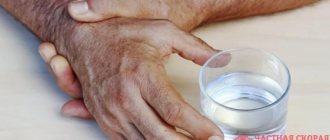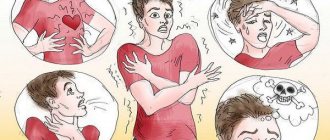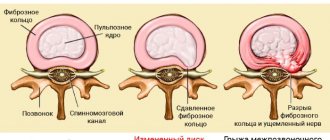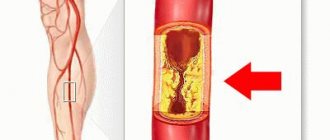Types and causes of occurrence
There are two forms of the disease: idiopathic (primary) and secondary. In the first case, the problem occurs for no apparent reason and is often hereditary. This is the type that occurs in young people.
The secondary form of restless legs syndrome occurs against the background of various diseases and conditions. The list of reasons includes:
- injuries to the brain or spinal cord (bruises, concussions, compression, etc.);
- vitamin deficiency, lack of minerals: most often the development of the disease is provoked by a deficiency of vitamins B1, B9, B12, as well as calcium and magnesium;
- pregnancy, especially its second half (the problem is associated with the increased need for microelements);
- renal failure and electrolyte imbalance that occurs as a result of it;
- diabetes;
- anemia (lack of iron in the blood);
- chronic or one-time severe stress;
- excessive physical activity;
- multiple sclerosis;
- rheumatoid arthritis;
- disruption of the thyroid gland, accompanied by an excess or deficiency of its hormones;
- alcohol or drug abuse;
- diseases of the veins of the lower extremities: varicose veins, phlebitis, thrombophlebitis;
- amyloidosis: severe systemic disorder of protein metabolism;
- chronic obstructive pulmonary disease;
- Parkinson's disease;
- excessive caffeine consumption.
- diseases of the gastrointestinal tract: celiac disease, dysbacteriosis, Crohn's disease;
- use of certain medications (antidepressants, antihistamines, etc.).
The development of pathology in childhood often occurs against the background of attention deficit hyperactivity disorder (ADHD).
Daily overload
A load that exceeds the physiological load for a long time inevitably leads to weakness in the legs.
This is primarily excess weight, when the joints and muscles of the lower extremities bear excessive load for a number of years. Obesity destroys bones, muscles and ligaments very slowly, and it seems to go unnoticed. But if you compare the physical capabilities of people with normal weight and obesity, the comparison will not be in favor of the latter. The third trimester of pregnancy is a test for a woman’s musculoskeletal system, when she is forced to adapt to her growing body weight. Lymphostasis or elephantiasis is another reason for the increased load on the legs.
Symptoms
The symptoms of restless legs syndrome are independent of its cause. The main sign of pathology is an unpleasant sensation in the feet and legs. Patients describe it as burning, itching, tingling, bursting or squeezing, pain, heaviness, etc. Discomfort appears at rest, most often while falling asleep, and causes a persistent desire to move the legs. The sensations stop during movement and resume at rest. As a result, the process of falling asleep is disrupted.
The problem persists throughout the night. The person continues to move his legs (and sometimes his arms) unconsciously, resulting in shallow and interrupted sleep. The severity of the attacks is especially pronounced at the beginning and middle of the night (until 2-3 am), then the discomfort gradually subsides. Insufficient night rest leads to daytime sleepiness. The patient's attention and ability to concentrate decreases. In severe cases, a persistent sleep disorder develops, which, in turn, leads to nervous exhaustion and depression.
Some people report discomfort in their legs during the daytime. Staying in a sitting position for a long time, for example, while traveling, working at a computer or visiting the theater, also provokes an attack.
Circulatory disorders
Vascular diseases of the nervous system, which can result in stroke and heart attack, are becoming more common among patients. In this case, situations of so-called transient ischemic attacks are possible, when a “flickering” of symptoms occurs - weakness occurs acutely, but quickly passes. After such an incident, you cannot be complacent and assume that everything turned out okay. It is necessary to identify the cause of the incident as quickly as possible and take appropriate preventive measures.
Stroke and heart attack can occur not only in the brain, but also in the spinal cord. A spinal stroke that occurs at any level can leave a person disabled or require a long and incredibly labor-intensive recovery. It must be said that due to the structure of the spinal cord, recovery after a spinal stroke is rarely successful, even in comparison with a stroke that affects the brain.
Weakness in the limbs may result from myocardial infarction, in which case gastrointestinal symptoms are often associated - nausea, abdominal pain, bloating. Some forms of heart attack thus remain undiagnosed, since the clinical picture is not typical and “imitates” an acute disease of other organs (for example, acute pancreatitis).
The veins or arteries of the lower extremities may be affected. Chronic venous insufficiency not only reduces physical strength, leads to pain and causes aesthetic problems, but also threatens the formation or separation of a blood clot (which, if the circumstances are unsuccessful, can block the pulmonary artery - pulmonary embolism is often a fatal condition). Blood stagnation also occurs in chronic heart failure, when swelling appears in the legs.
The formation of atherosclerotic plaques in the lumen of the vessel is a common cause of gait disturbance in the elderly. The so-called “intermittent claudication” develops.
Obliterating endarteritis also manifests itself as intermittent claudication, when the lumen of the vessels gradually narrows. Raynaud's disease is manifested by changes in skin color, weakness and swelling, the trigger for which is often hypothermia or frostbite. Menopause and premenstrual syndrome can also cause transient leg weakness.
Diagnostics
The diagnosis of restless legs syndrome is made on the basis of the patient's complaints about characteristic symptoms, standard and neurological examination. To confirm, two examinations are prescribed:
- electroneuromyography: detection of leg muscle contractility;
- polysomnography: recording the main indicators of the body’s functioning (pulse, breathing), as well as movements during sleep.
In addition to making the main diagnosis, the doctor tries to identify the cause of the pathology. For this purpose the following may be prescribed:
- general and biochemical blood tests (assessment of the level of hemoglobin, ferritin, uric acid, glucose, trace elements, etc.);
- general urine analysis;
- CT or MRI of the brain;
- Doppler ultrasound of the vessels of the lower extremities (to detect varicose veins and thrombophlebitis);
- blood test for thyroid hormones, etc.
If necessary, the patient is referred for consultation to specialized specialists (endocrinologist, gastroenterologist, urologist, etc.).
Hope for the future
Although there is no targeted treatment for this condition, researchers are working to learn more about RLS.
“Even though scientists have discovered these facts, treating RLS remains challenging. Since iron deficiency occurs in the brain, it is not easy to get it there. We are looking at iron treatments, trying oral and intravenous iron. Sometimes treatment doesn't work. There is an assumption that iron deficiency can change genetics or other processes in the body, so even after replenishing the deficiency, the patient's condition remains the same. We are working on new iron therapy treatments for people who do not respond to standard therapy. In addition, other treatments for RLS are being explored.”
Treatment for restless legs syndrome
Treatment requires an integrated approach. If the pathology is primary, the following drugs are used:
- antiparkinsonian drugs (levodopa, bromocriptine and others): normalize dopamine metabolism in tissues, eliminating the consequences of its deficiency;
- drugs against epilepsy (carbamazepine, phenobarbital, etc.);
- benzodiazepines: relieve seizures and normalize sleep;
- local painkillers in the form of gels and ointments (nurofen, ibuprofen, ketoprofen and analogues);
- tableted anti-inflammatory drugs.
The first three groups of drugs are prescription drugs. Their intake must be carried out in strict accordance with the doctor's prescription. In severe cases, opioid medications are used, but their use is strictly limited.
If the disease occurs against the background of another pathology, remedies are prescribed to eliminate the cause:
- Metformin: a drug that normalizes blood sugar levels;
- antianemic drugs that increase the level of iron in the blood (fenuls, ferrum lek);
- iodine preparations to stabilize the thyroid gland;
- vitamin and mineral complexes for vitamin deficiency or lack of microelements.
Physiotherapy (magnetic therapy, darsonvalization), massage, and physical therapy helps improve the effect of drug treatment. These techniques are auxiliary.
In the long term, it is advisable to undergo a course of spa treatment aimed at strengthening the nervous system. Mud baths, pine baths, hydrotherapy, lymphopressotherapy - all this helps to normalize the mental state, improves sleep and reduces the frequency of attacks.
Make an appointment
Classification
Tremor or trembling is a motor disorder, which in the structure of neurological syndromes belongs to hyperkinesis. By origin, it can be primary (essential) and secondary, which is a sign of an underlying disease, intoxication or the effects of medications. Taking into account etiopathogenetic features, two types of tremor are distinguished:
- Physiological.
Occurs in healthy individuals, is characterized by low amplitude, and is not visually detected. Physiological tremor is a normal mechanism of motor control, is enhanced by external factors, but can be consciously reduced by the patient himself. - Pathological.
Caused by various disorders in the central or peripheral parts of the nervous system. The most common variants are parkinsonian, cerebellar, and essential tremor. There are also dystonic, neuropathic, orthostatic and some other types.
Considering the clinical and morphological features, we distinguish between slow (in the range from 3 to 5 Hz) and fast tremors (6-12 Hz), low- and high-amplitude (small- or large-scale), intermittent or constant. An important criterion for systematization is the conditions of development, according to which rest tremor and action tremor are distinguished (action tremor). The latter has several varieties:
- Postural (static).
Caused by maintaining a stationary position of body parts (arms extended forward and spread to the sides, head). A type of tremor is considered to be positional tremor, characteristic of strictly defined positions. - Kinetic.
Associated with motor acts. Simple kinetic tremor occurs during any non-purposeful movements. Intentional trembling intensifies as a goal is achieved. - Kinesiospecific.
It is observed only during certain narrowly focused actions. A typical example is writing tremor, which is absent in other situations involving the same muscles. - Isometric.
Occurs under conditions of isometric muscle tension, with strong contraction without movement. Such trembling is observed when clenching a hand into a fist or holding a heavy object.
Topographic classification involves dividing tremor depending on location. Focal affects only one anatomical zone (hand, head, soft palate, etc.), segmental covers adjacent areas (bibrachial), when several areas are affected on one side, hemitremor is noted, and involuntary movements throughout the body suggest generalized tremors. When making a diagnosis, the time of first appearance of the symptom, family history, and connection with the use of certain substances are taken into account.
Seizure prevention
In order not to be tormented by questions about what to do with restless legs syndrome and how to cure it, it is recommended to adjust your lifestyle. Proper nutrition, physical activity, proper rest - all this helps reduce the frequency of attacks and even get rid of them completely. Doctors recommend adhering to the following rules:
- minimize the use of stimulants: coffee, black tea, cola, energy drinks;
- stop smoking and drinking alcohol;
- eat right: the diet should contain basic macro- and microelements in sufficient quantities; if you are overweight, you need to limit calories by 10-15% relative to the norm;
- avoid eating sweets and other fast carbohydrates before bedtime;
- if necessary, take multivitamins;
- walk in the fresh air before bedtime;
- reduce stress levels as much as possible;
- avoid staying in the same position for a long time;
- go to bed in a well-ventilated and darkened room;
- Minimize watching TV and playing video games before bed;
- periodically do foot baths with the addition of essential oils of mint and lavender; they help relax muscles and relieve spasms.
Moderate physical activity is a good prevention of physical inactivity. If you have restless legs syndrome, it is better to give preference to walking, light jogging, and swimming. You can also achieve improvement through yoga and meditation, especially those asanas that relieve leg tension.
Psychological problems
Emotions influence our lives much more than we realize. The fact is that the body’s reactions are regulated by the autonomic nervous system, another name for which is the autonomic one. This system operates according to its own laws, regardless of our will and desires. Therefore, the body's reactions - heartbeat, breathing, blood circulation, digestion, spasms - practically cannot be regulated by willpower. Our every daily experience, and even more so mental illness, affects the functioning of all organs and systems.
Weakness in the legs occurs with the following disorders:
- panic attack;
- hysteria;
- prolonged stress;
- anxiety disorder;
- depression;
- schizophrenia;
- nervous exhaustion or neurasthenia;
- chronic psychotrauma;
- neurocirculatory dystonia.
Treatment at the Energy of Health clinic
Specialists at the Health Energy clinic are ready to help with restless legs syndrome of any severity. At your service are experienced doctors from the Neurology Department of the clinic, who will make a diagnosis and select effective treatment. We use an integrated approach that includes:
- modern drug regimens prescribed individually;
- physical therapy in our own gym;
- all types of physiotherapy;
- acupuncture;
- restorative massage;
- organization of sanatorium-resort treatment;
- Recommendations for preventing attacks at home.
If necessary, our psychotherapists will come to help.
Cause of numbness
Simultaneously with orgasm, the muscles of the blood vessels contract. This impairs blood supply. So, the muscles become numb. Seeing a doctor is required only in special cases.
To make a diagnosis, you will need an X-ray of the spine, a blood test, ultrasound, MRI, electroneuromyography (determines the location of nerve damage) and CT.
After sex, your legs shake and you feel dizzy - this phenomenon is more typical for coffee lovers who abuse the drink. All caffeine-containing liquids lead to increased excretion of calcium and iron from the body. Also at risk are active smokers, adherents of extreme diets, and professional athletes.
Advantages of our clinic
“Health Energy” is a multidisciplinary medical center that offers each patient the highest quality medical services. Our specialists have modern diagnostic equipment at their disposal, which allows them to quickly determine the cause of problems and select treatment. By contacting us, you receive:
- individual approach to diagnosing pathology;
- consultations with doctors of various specialties;
- attentive and sensitive attitude on the part of medical personnel;
- reception by appointment without queues and long waits;
- own day hospital;
- comprehensive treatment, including not only medications, but also physiotherapy, exercise therapy, massage and other techniques;
- monitoring the effectiveness of treatment.
Restless legs syndrome can make every night hell. Sign up for examination and treatment at the Health Energy clinic and give yourself a good night's rest.
Why do my legs shake after training?
Very often, trembling in the legs is observed due to significant physical activity and training. This happens if a person performed a set of exercises to develop the calf muscles, muscles of the thighs and buttocks. That is, the training involved mainly the lower body. Thanks to this, a large amount of lactic acid appears in the muscles and blood circulation improves. In addition, stagnant processes are eliminated. As a result of increased blood circulation, trembling in the legs may occur.
Why do my legs shake after squats?
Tremors may also occur after squats. It is associated with excessive strain on the anterior thigh muscles, which are located above the knee, as well as the muscles of the buttocks.
Why do my legs shake after squats?
- Tremors most often occur in the upper legs.
- This indicates that the training was successful and the muscles are gradually adapting to the load.
- Over time, as soon as the person’s body becomes strong enough and adapts, the tremor will go away.
Hands and legs are shaking from hunger
Legs may shake from hunger. This suggests that the body does not have enough nutrients, and there is no energy that will transmit nerve impulses from the limbs to the brain.
Hands and legs are shaking from hunger:
- Tremors during hunger are a common problem among people with diabetes. This is a common problem because when glucose levels drop, some metabolic processes stop.
- Also, people who suffer from low blood pressure may suffer from tremors when hungry. It is advisable for such people to eat food at the same time, adhering to a certain schedule.
- With anemia and a decrease in the number of red blood cells, as well as if a person is very hungry, tremors may occur.
Dieting
Why do my legs shake after physical activity?
Tremor can occur after heavy physical work and unusual stress. The weaker a person’s muscular system is, the less often they resort to training, the higher the likelihood of developing tremor. To avoid it, you need to develop muscles and play sports.
Why do my legs shake after physical activity?
- After regular physical activity, tremors associated with muscle strain usually go away. Trembling often occurs after a person has become nervous or has suffered stress.
- As a result, a huge amount of hormones are released in the body, which correct the functioning of the nervous system and worsen the overall well-being of a person. As a result, a person may feel weak and trembling in the legs for a short period of time.
- Most often, shaking is invisible to other people and only worries the patient. In this case, you need to relax more, devote time to hobbies, and try to be calmer in stressful situations, and not take everything to heart.
Sport
Why do my legs shake after stretching?
Very often tremors are observed after stretching.
Why do my legs shake after stretching?
- This usually occurs when the inner and back of the thigh are stretched.
- This is not dangerous; it indicates that the nerve fibers have not yet fully adapted to the stretching muscles, so they make themselves felt.
Yoga
Why do my legs shake after playing sports?
Physical activity is always accompanied by physiological tremor; there is no need to stop classes because of it, you need to continue.
Why do my legs shake after playing sports?
- Under no circumstances should you overstep yourself or perform exercises through pain.
- After all, any activity at the limit of your physical capabilities will not end well.
- Continue exercising, reducing the load slightly, but do not stop exercising.
- Tremor, which is associated with sports and excessive strain, muscle stress, is considered physiological and absolutely normal.
- Nerve fibers are not yet adapted to serious loads, so shaking is observed.
Training
Why do your legs shake when you stand?
Tremors in the lower extremities are often observed in people who do standing work. These could be sellers or canteen workers who spend most of their time serving food.
Why do your legs shake when you stand?
- This is also typical for cooks and turners. This occurs due to tension and the need to constantly remain in an upright position.
- In this case, to get rid of unpleasant sensations, it is recommended to change position frequently, perhaps squatting to unload some muscles and load others.
- Once a person has good experience in trading, the tremors will disappear. To eliminate symptoms, you can use Lyoton or other means that help relieve tension.









